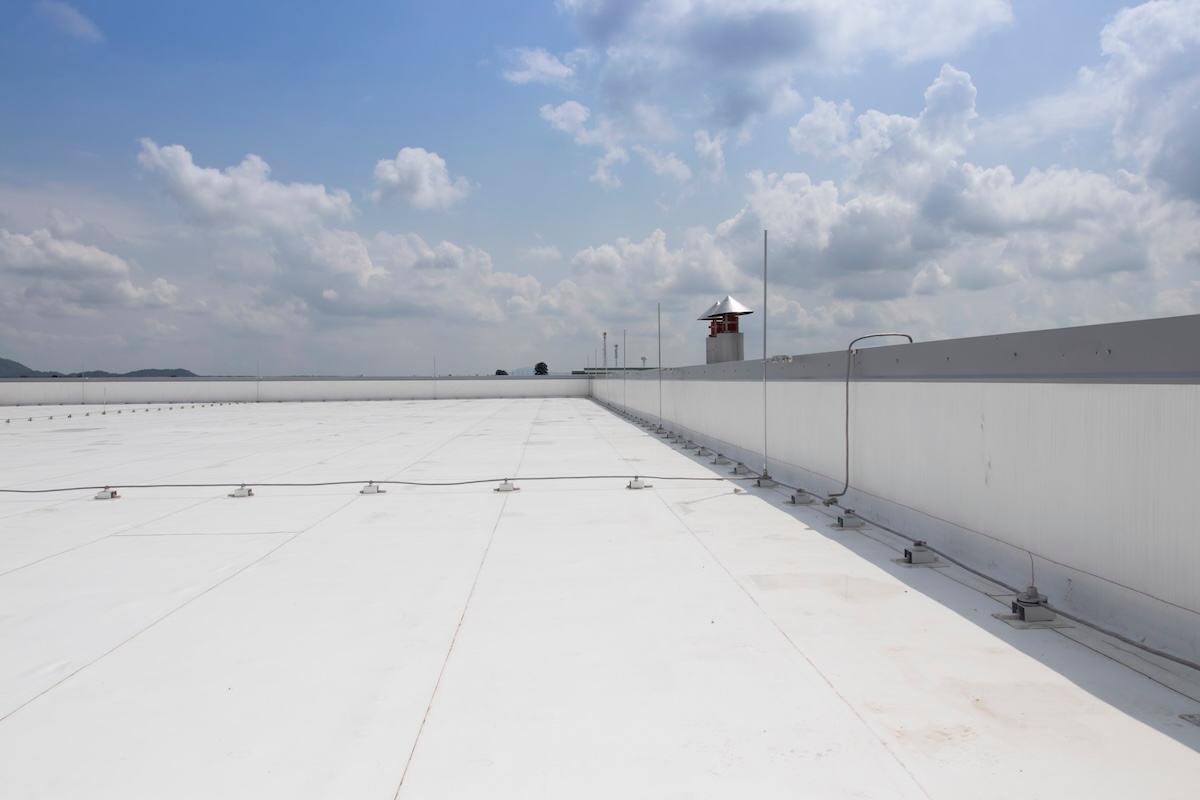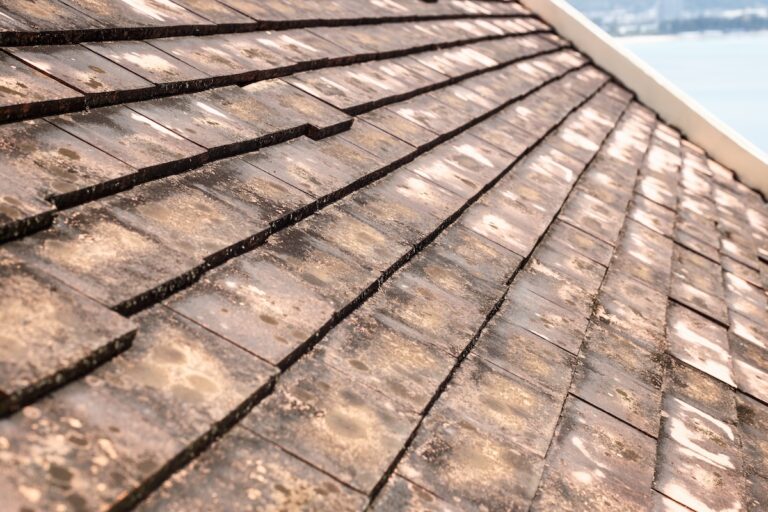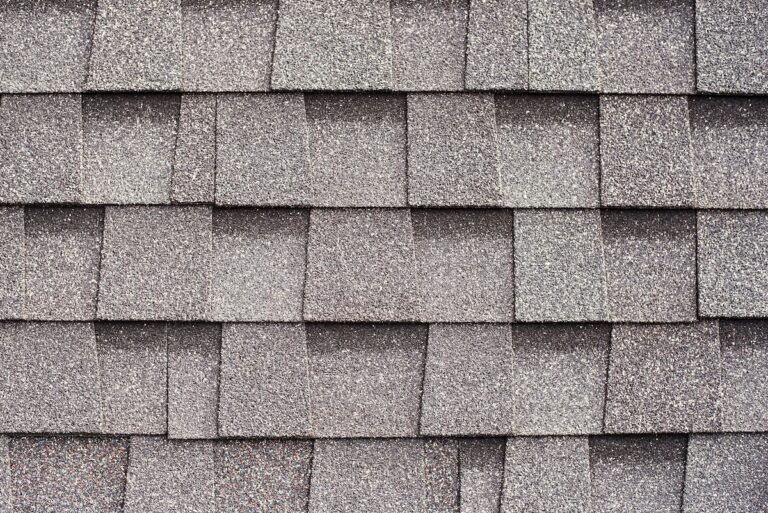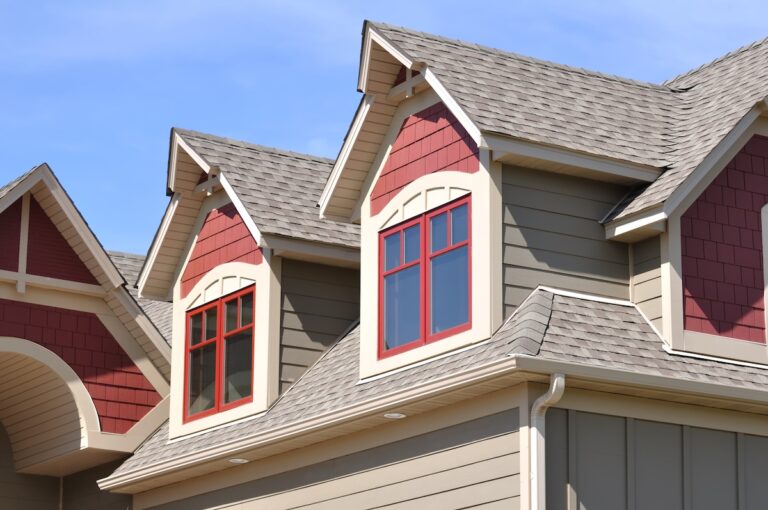If you’re a building owner exploring durable and cost-effective roofing solutions, you’ve likely come across PVC roofing membrane in your research. But what exactly is PVC roofing, and why is it growing in popularity? We specialize in providing reliable roofing solutions tailored to your needs, and today we’re shedding light on PVC roofing membranes to help you make an informed decision.
This blog dives into everything you need to know about PVC roofing membranes, from:
- Their composition
- Benefits
- Maintenance tips
- Commercial roof installation process
By the end, you’ll understand why PVC roofing membranes might just be the perfect choice for your building.
What Is PVC Roofing Membrane?
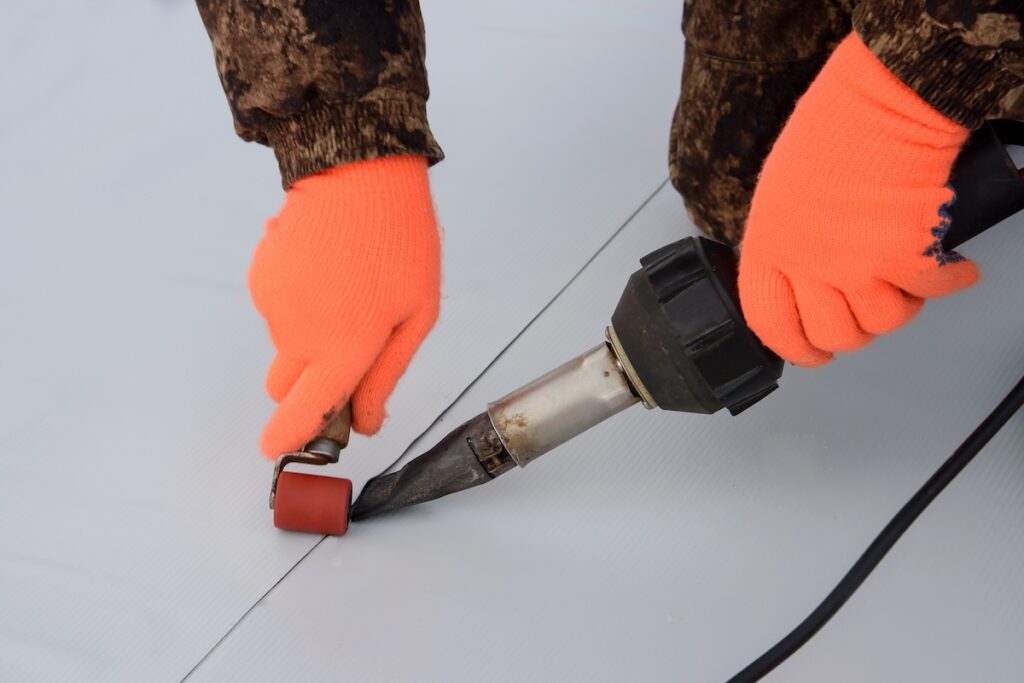
PVC roofing membrane is a single-ply thermoplastic roofing material made primarily from polyvinyl chloride. This membrane is designed to provide a watertight and durable barrier that protects your building from the elements.
PVC membranes are commonly used on flat or low-slope roofs, which are more prone to ponding water and environmental wear. The material offers exceptional durability, flexibility, and weather resistance, making it a preferred choice for commercial buildings, warehouses, and even some residential properties.
What Does a PVC Roofing System Include?
- PVC Membrane: The waterproof layer that acts as the heart of the system.
- Insulation: Underlying material that improves thermal efficiency and offers structural support.
- Fasteners and Adhesives: Tools to firmly secure the membrane to the roof deck.
- Flashing and Accessories: Additional components for watertight seals around edges, penetrations, and rooftop equipment.
This simple yet highly effective system is versatile, making it suitable for both new construction and re-roofing projects.
Benefits of PVC Roofing Membrane
Investing in PVC roofing membrane comes with a host of advantages. Below, we break down the key benefits in detail so you can see why this material stands out from the crowd.
💪 Exceptional Durability
PVC is engineered to withstand harsh weather conditions, UV exposure, and chemicals. It won’t easily crack or degrade under the pressure of extreme heat, cold, or wind, making it an excellent choice if your building is in a climate with unpredictable weather. If you’re comparing different roofing materials, check out our guide to TPO roofing installation to understand how both systems perform in demanding environments.
💧 Superior Water Resistance
One of the standout features of PVC roofing membrane is its watertight design. Flat and low-slope roofs are notorious for drainage issues, but PVC membranes are sealed at the seams, creating a fully waterproof surface. This feature significantly reduces the risk of leaks and water damage over time.
⚡️ Energy Efficiency
PVC membranes are reflective, which means they bounce sunlight away from your building rather than absorbing it. This helps regulate the building’s internal temperature, keeping it cooler during summer. The result? Lower energy bills and less strain on your HVAC system. For energy-efficient upgrades to your business, explore our commercial roofing in Blue Bell solutions designed to optimize performance and durability.
🕰️ Longevity
When properly installed, PVC roofing membranes can last 20–30 years or more. That longevity means fewer roof replacements over the lifetime of your building, saving you both time and money in the long run.
😴 Low Maintenance
Compared to other roofing systems, PVC membranes require minimal maintenance. Thanks to their durability and seamless installation, building owners can expect fewer issues like cracks or leaks to worry about.
🌳Environmentally Friendly
PVC roofing membranes can be recycled at the end of their lifecycle, reducing their environmental impact. Plus, the energy efficiency they provide means your building leaves a smaller carbon footprint.
Common Applications of PVC Roofing
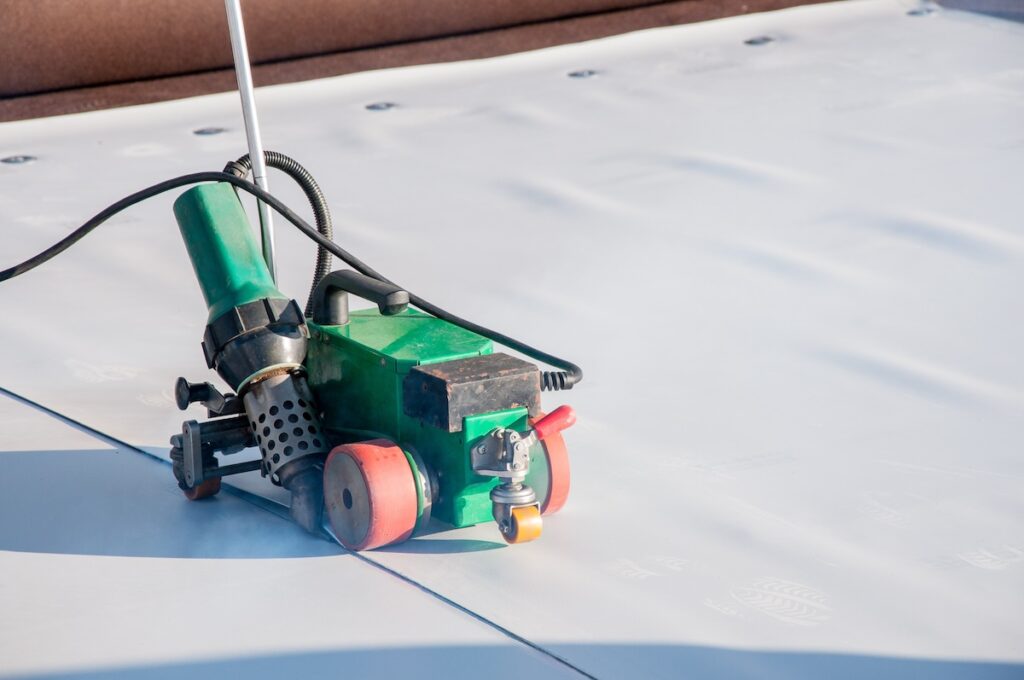
PVC roofing membranes have proven highly effective in a variety of settings. Here are some of the most common applications where they shine:
- Warehouses
- Office Buildings
- Apartment Complexes
- Retail Centers
- Manufacturing Plants
If you own or manage any of these types of facilities, PVC roofing membranes are worth considering for their long-lasting performance and weather resistance.
How Is PVC Roofing Installed?
The installation process of PVC roofing is straightforward but requires experienced professionals to ensure long-term performance. At G Cannon Roofing, our team follows industry best practices to set your roof up for success.
Here’s an overview of the typical installation steps for PVC roofing membrane systems:
- Roof Deck Preparation: Before laying the PVC membrane, the roof deck must be clean, smooth, and free of debris or protrusions.
- Insulation Installation: An insulation layer is added to improve thermal performance and energy efficiency.
- Membrane Placement: The PVC membrane is rolled out and laid flat across the roof.
- Seam Welding: A heat-welding process is used to securely bond the seams of the membrane, creating a watertight seal.
- Attachment: Depending on your roof type, the membrane might be mechanically fastened, fully adhered with adhesive, or ballasted.
- Flashing and Detailing: Special attention is given to vulnerable areas like roof edges, parapets, and penetrations to ensure a leak-free finish.
Proper installation is crucial, as poor workmanship can nullify the benefits of PVC roofing membrane. Always hire a licensed roofing contractor well-versed in commercial roof inspections with experience in PVC systems for the best results. Learn more about different flat roof materials to see how PVC compares in cost, lifespan, and installation complexity.
Maintenance Tips for PVC Roofing Membranes
While PVC roofing requires less maintenance than some other options, routine care can extend its lifespan and help you avoid costly repairs. Here are some simple tips to keep your roof in great shape.
- Schedule Regular Inspections: Have your roof inspected at least twice a year and following major storms to catch potential issues early.
- Clean the Surface: Remove debris, dirt, and algae buildup periodically to maintain your roof’s reflective properties.
- Check Seams and Flashing: Inspect the seams, flashing, and edges for signs of wear, ensuring all seals remain watertight.
- Address Repairs Promptly: If you notice damage or suspect a leak, contact a commercial roofing professional immediately to prevent further deterioration.
By being proactive about maintenance, you can maximize your investment in PVC roofing.
PVC Roofing vs. Other Single-Ply Membranes
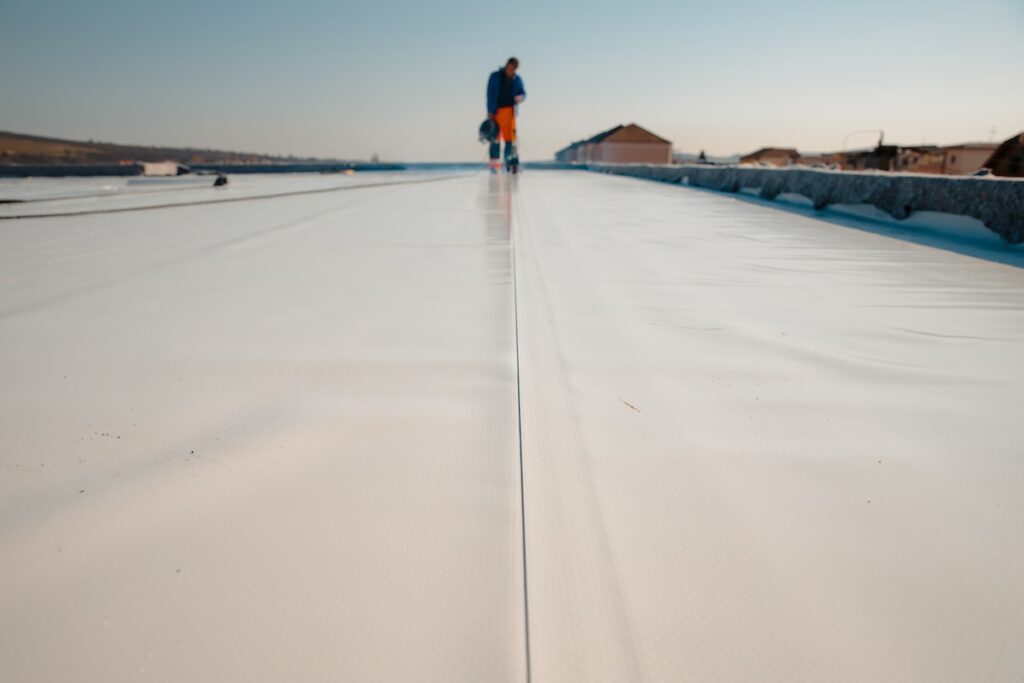
PVC isn’t the only single-ply roofing membrane on the market—TPO and EPDM are also common options. Here’s a quick comparison to help you understand how PVC stacks up.
PVC vs. TPO
- Durability: PVC tends to be more robust, especially in areas exposed to chemicals or oils.
- Reflectivity: Both offer excellent solar reflectance, but PVC has the edge in heat-welded seam strength.
PVC vs. EPDM
- Installation: PVC is heat-welded, while EPDM relies on adhesives or tapes, making PVC seams more resistant to leaks.
- Energy Efficiency: PVC offers better solar reflectance compared to the darker EPDM membranes.
While TPO roofing systems and EPDM systems have their merits, PVC is often the preferred choice for building owners requiring a dependable, high-performance solution.
Choosing the Right Roofing Partner
Selecting the best roofing system is only half the battle—for optimal results, you need a roofing contractor you can trust. At G Cannon Roofing, we pride ourselves on delivering top-tier service and expertise at every step of the process.
Here’s what sets us apart:
- Expert Installation: Our team is trained and experienced in PVC roofing installations.
- Tailored Solutions: We work with you to identify the best roofing system for your unique needs.
- Ongoing Support: From maintenance to repairs, we’ve got you covered long after installation.
Our roofing services in Conshohocken team combines expertise and dedication to ensure every installation meets the highest standards of quality.
Is PVC Roofing Membrane Right for You?
Deciding whether PVC roofing membrane is the best fit for your building depends on your priorities. If you’re looking for a durable, watertight, energy-efficient, and low-maintenance option, PVC roofing is an excellent choice.
At G Cannon Roofing, we’re here to guide you every step of the way. Contact us today for a consultation, and find out how PVC roofing membranes can protect your building for years to come.
